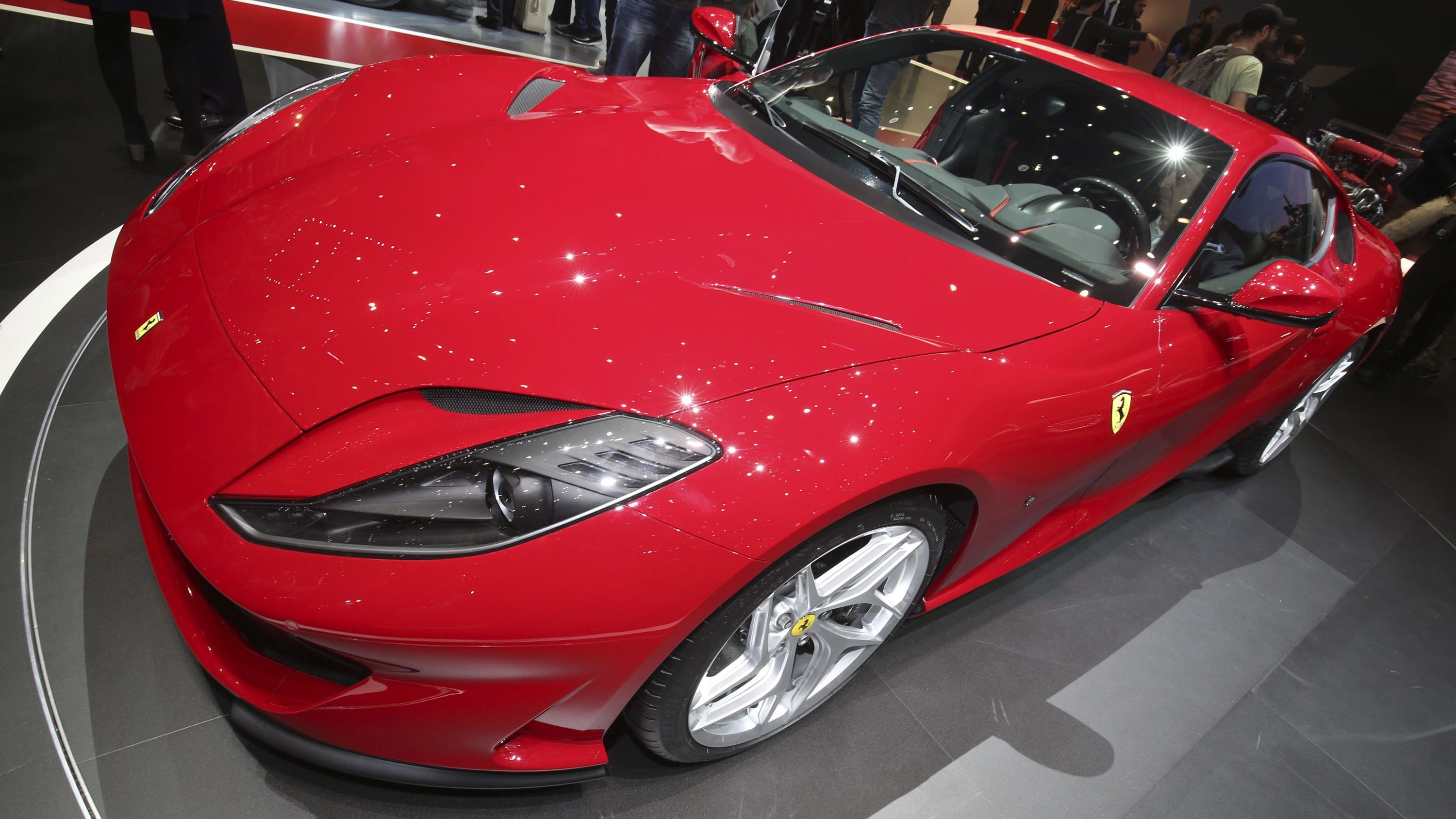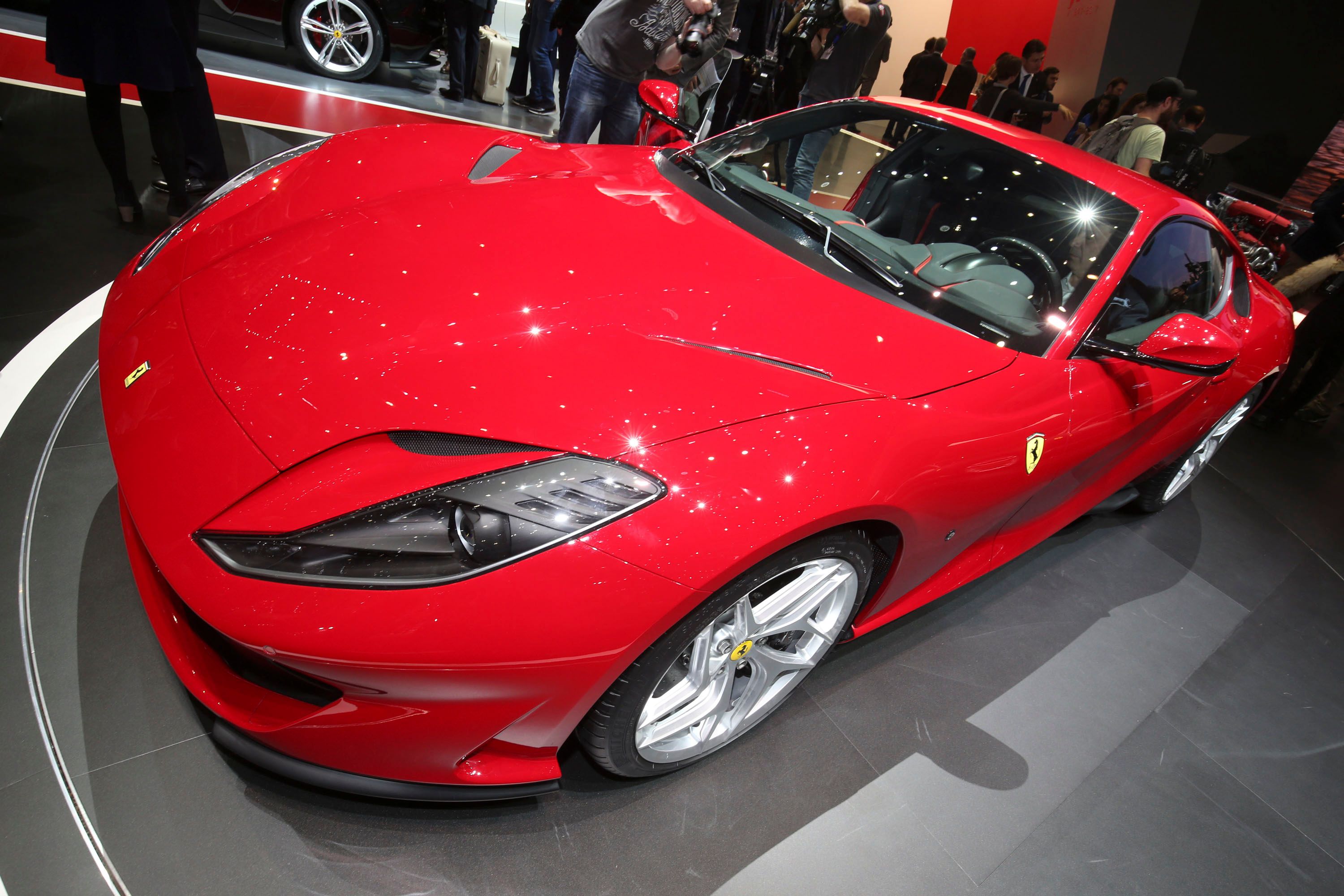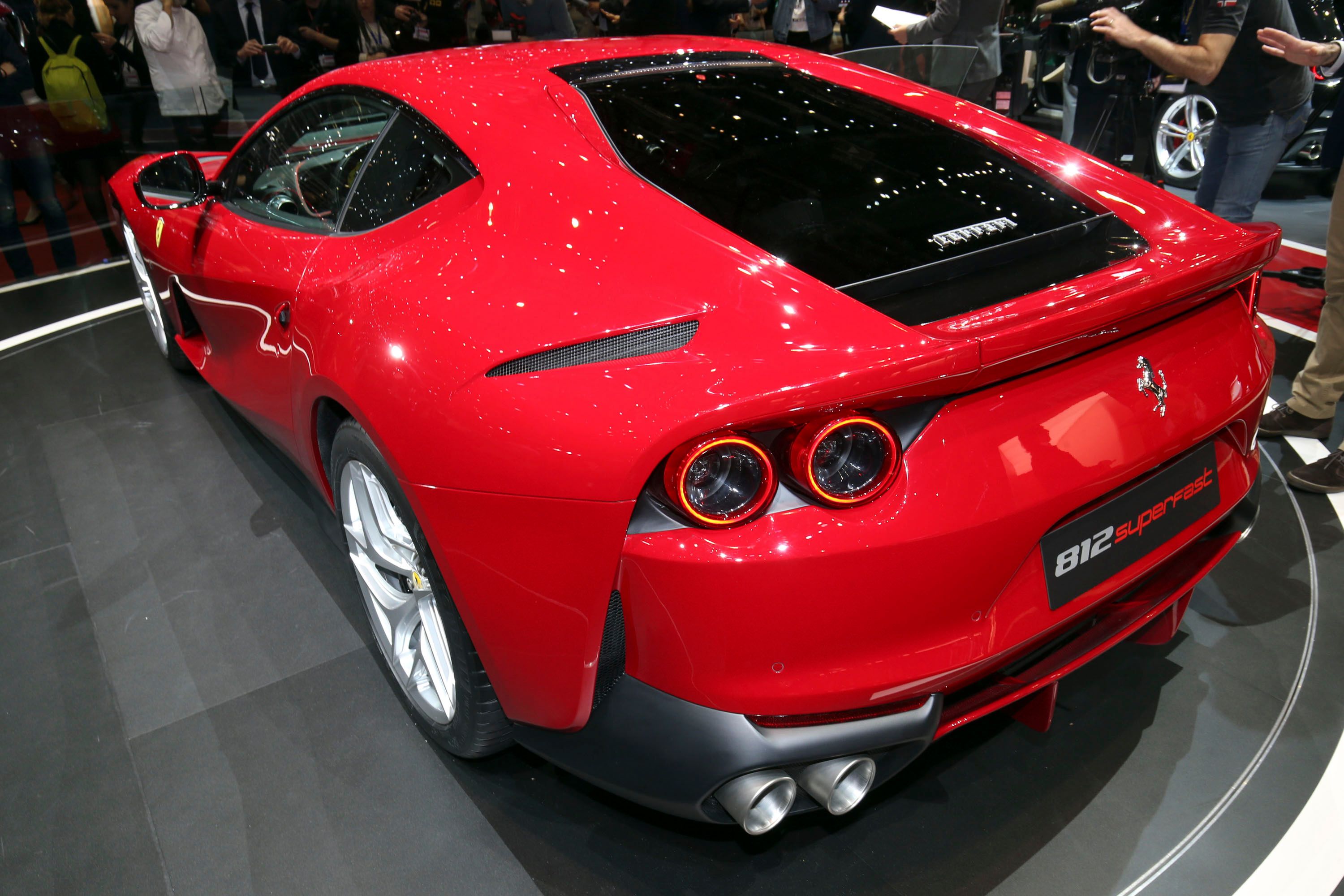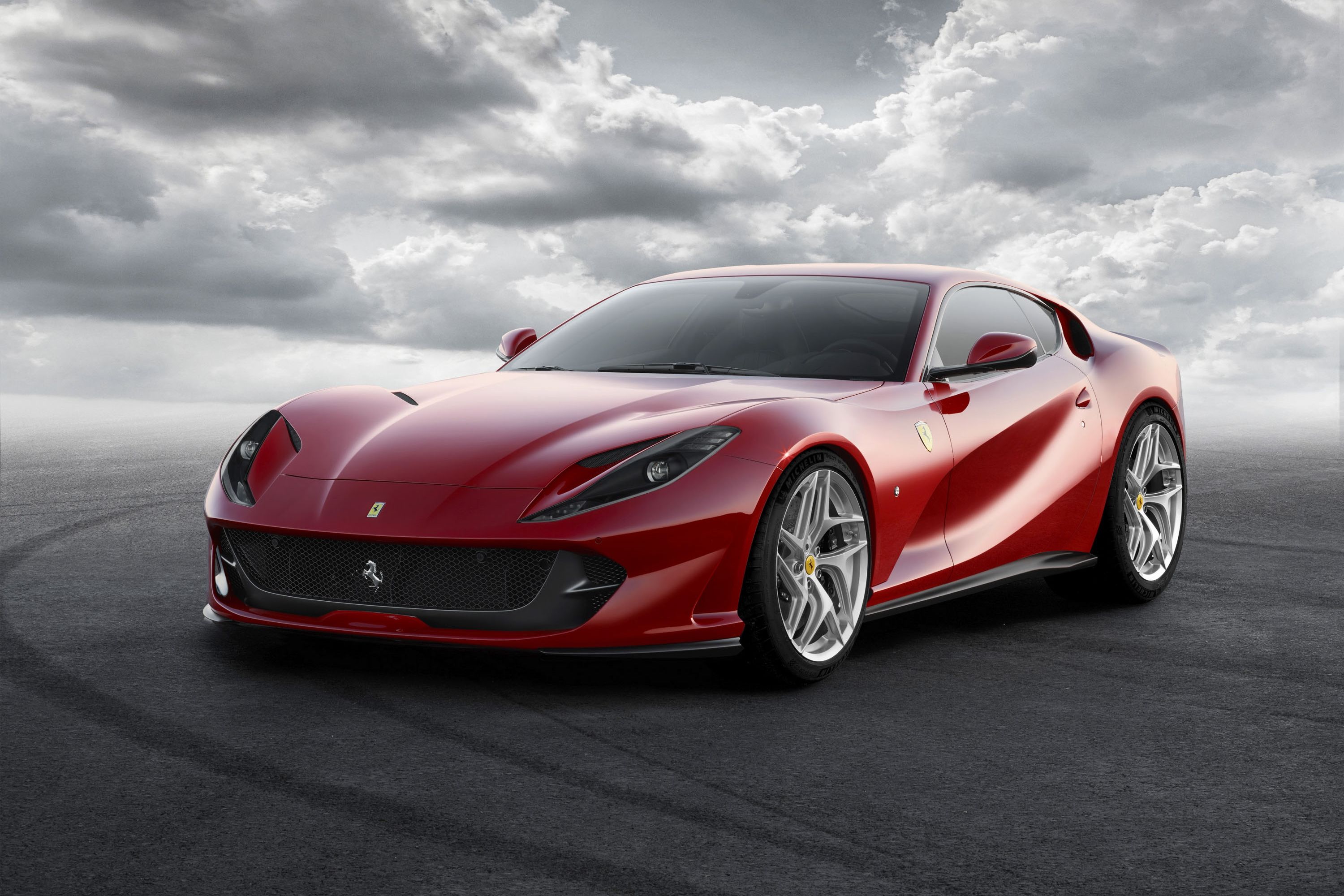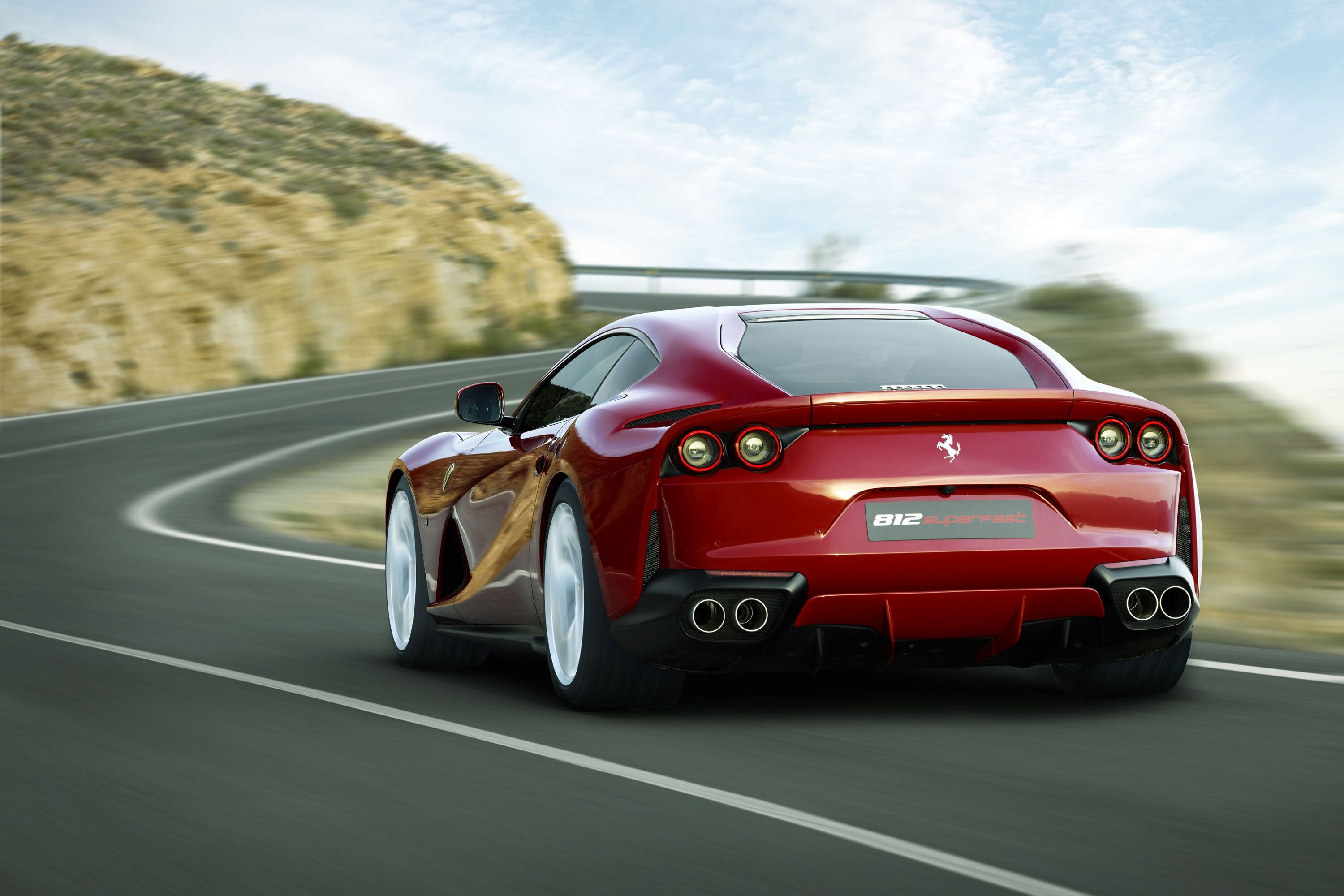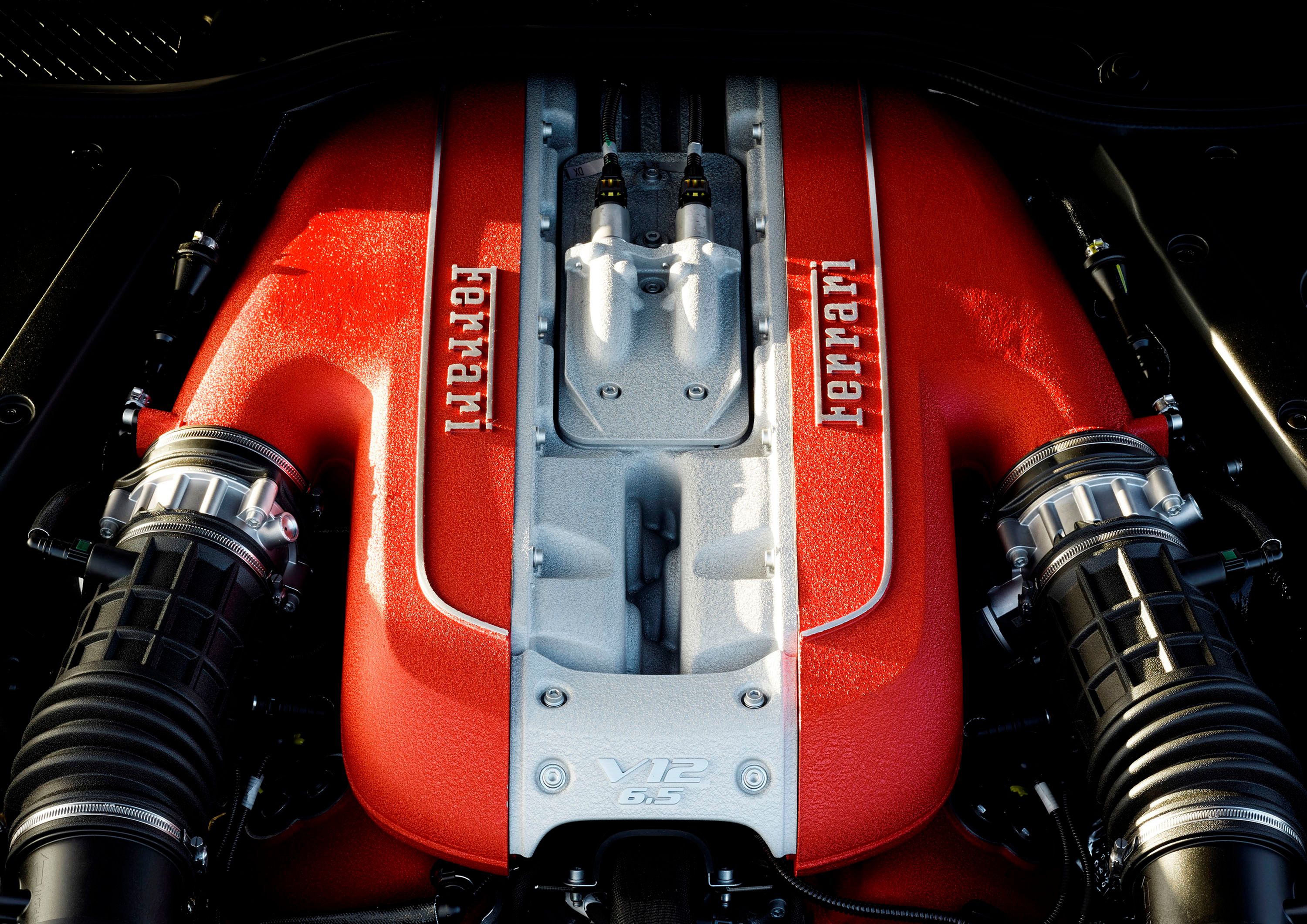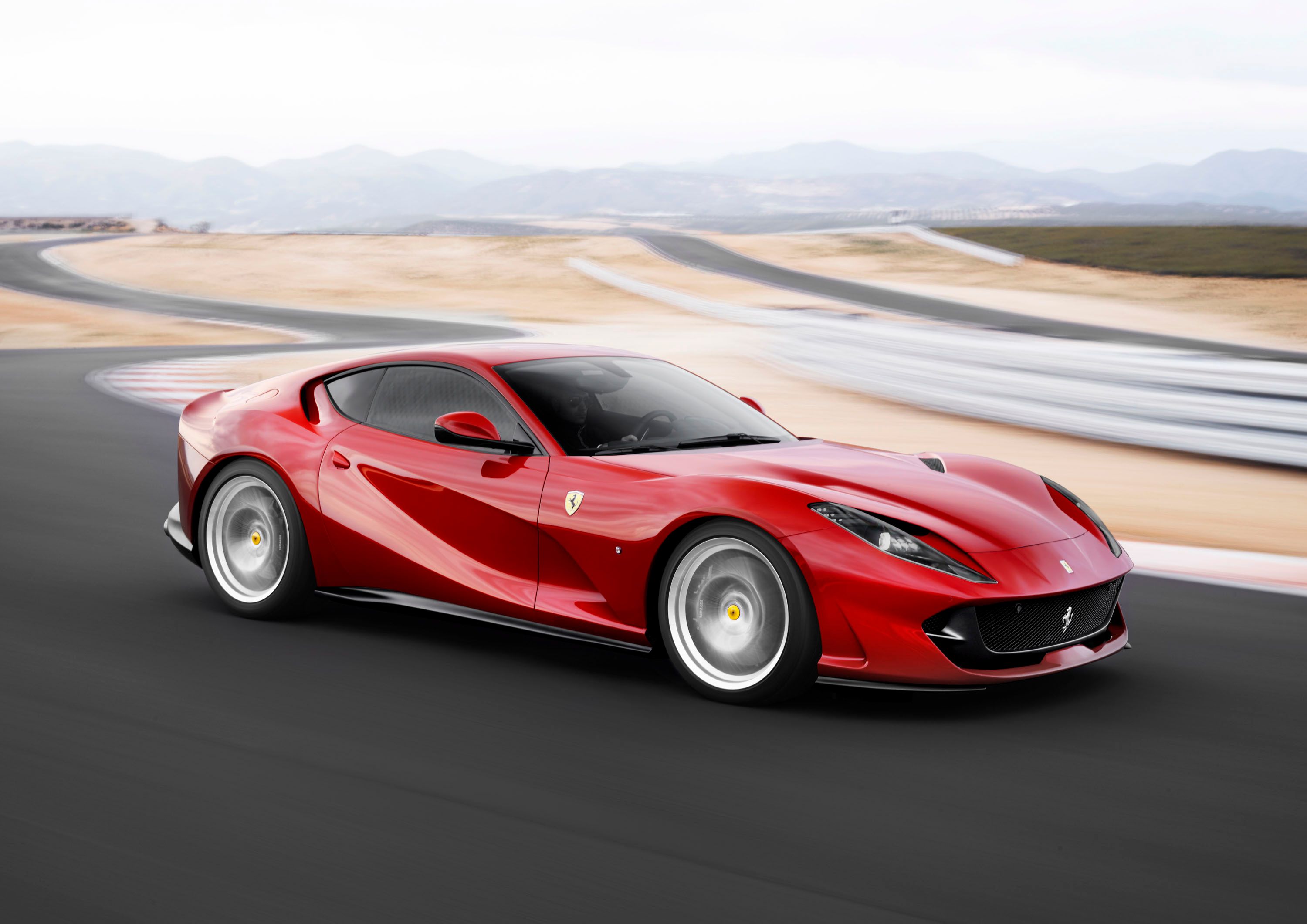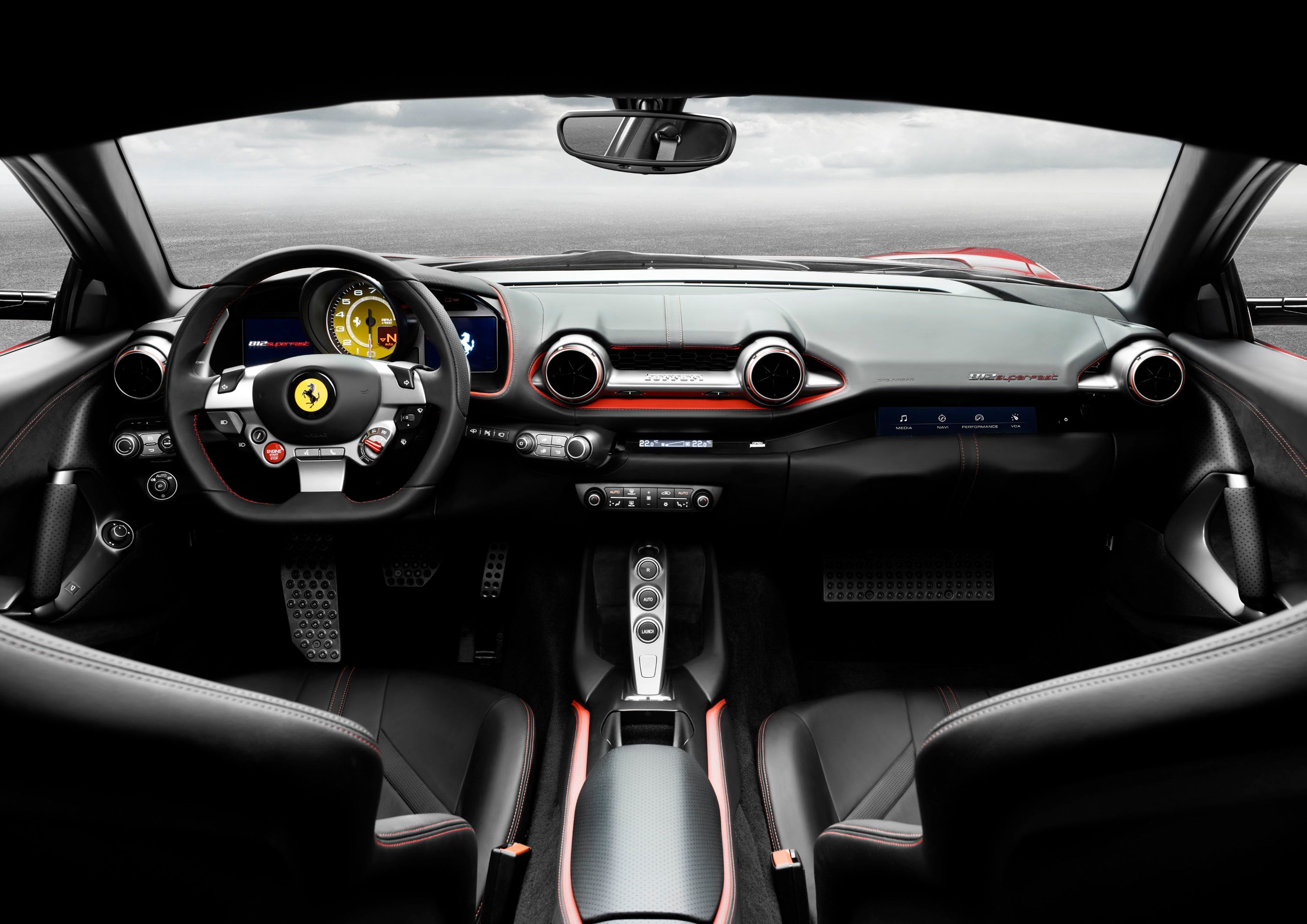Ferrari is most definitely a company that’s very set in its ways. One good example of this comes from the company’s founder, Enzo Ferrari, who was famously quoted as saying “aerodynamics are for people who can’t build engines.” Of course, as we all know, aero is now a crucial element of any modern Prancing Horse, but the point is this – Ferrari doesn’t change unless it’s forced to. Usually, it’s a faster on-track rival that forces the change from the win-or-nothing Ferrari, but sometimes, it’s market pressures that dictate some degree of adaptation. But even when (or perhaps “if” would be more accurate) the Italian marque concedes to change, it still zealously defends that original kernel of what a Ferrari is “supposed” to be. The latest example of this is the 812 Superfast, which just debuted at the Geneva International Motor Show sporting a mix of the new and the traditional, offering us a cocktail of all that old-school magic, but in a thoroughly updated glass.
Not that you’d know it from a single glance at the press photos and spec sheet. The exterior is sharp and decked-out in adaptive aerodynamics, while the engine is the most powerful lump ever added to a road-going production Ferrari. Not only that, but the top speed is rated at over 211 mph, which means it’s also the fastest road-going mass-production Ferrari ever built.
But if you look past the numbers, you’ll find the past rearing its head again and again...
Continue reading for the full story.
Well, The 812 Superfast Certainly Looks Like A New Ferrari
That’s because it is! The 812 Superfast is most definitely a modern Prancing Horse, sporting razor sharp styling front to back. There are bright LEDs in the headlights, and the aerodynamics were all thoroughly done up with both active and passive adaptive systems. In fact, the 812’s predecessor, the F12tdf, provided the engineers who made the 812 with a fantastic jumping off point, with improvements including not only more downforce for extra stick, but lower drag for a higher top speed and better fuel consumption.
That said, this thing isn’t some terra-bound alien spaceship like the LaFerrari. Rather, the 812 Superfast is offered as a “Grand Tourer” berlinetta, a throwback body style from Ferrari antiquity (Ferrari says that its “past is studded with just such cars, a long and illustrious list of exceptional models that have gone down in automotive history”).
More specifically, the 812 Superfast is said to take after the 1969 365 GTB/4 Daytona.
The new Ferrari 812 Superfast pictured on the left, with its ’69 Ferrari 365 GTB/4 inspiration pictured on the right.
Seeing these two machines side by side, it becomes blatantly obvious how much Ferrari is looking to the past when designing road-goers like the 812. The long nose, the cab-back proportions, the low, flat, wide stance… it’s like an artist took a razor blade to the ’69 model and sliced it into the 812.
Tale of two Ferraris. New Ferrari 812 Superfast pictured on the left, 1969 Ferrari 365 GTB/4 pictured on the right.
As you can see, the rear is even closer in appearance than the front. The roofline, the short, flat tail, the four individual round tail lamps and quad exhaust…
Clearly then, despite its electronically controlled wings and CAD panels and low-drag elements, the 812 Superfast is very much a product of what came before. At least aesthetically speaking.
So It Kinda Looks Like An Older Model Ferrari. Surely The Engine Is Thoroughly Modern?
In many ways, it is. Taking after the powerplant previously used in the F12berlinetta, the Ferrari 812 Superfast is equipped with a 6.5-liter V-12, besting the lump that came before thanks to slightly more displacement (the F12berlinetta gets a 6.2-liter V-12).
To make the most of its newly redesigned engine, Ferrari focused on upping efficiency through the car’s breathing with improved variable geometry inlet tracts, a feature originally developed for use in Ferrari’s F1 engines. The fuel system was also refined, with the 812 gaining a 350 bar (5,076 psi) direct injection set-up, a first for a spark-ignition engine.
Redline is set at a head-spinning 8,900 rpm. Meanwhile, output is rated at 790 horsepower at 8,500 rpm, approximately 60 horses more than the F12berlinetta. Torque comes in at 530 pound-feet at 8,500 rpm, 80 percent of which is created at a very low 3,500 rpm.
In terms of layout, the engine is mounted in the nose, but close to the cabin in a front-/mid-position. However, unlike a traditional transaxle, Ferrari put the gearbox in the rear, which helps to more evenly distribute the weight and improves handling.
Speaking of the gearbox, managing the cog swaps is a dual-clutch automatic transmission (DCT), which offers shorter gearing for more brutal acceleration, plus it was reprogrammed for even faster shifts.
Once again, we find efficiency rearing its head with a standard Start&Stop system. However, despite this strange acquiescence to frugality, the speed this thing can make is every bit as lavish as you might expect: the 0-to-60 mph sprint is completed in 2.9 seconds, while the top speed is rated at over 211 mph. That makes the 812 Superfast “the most powerful and fastest road-going Ferrari ever built,” if you exclude the mid-engine special editions, that is.
So here’s the kicker, folks. Despite all this newfangled tech, there’s something distinctly old school about the 812’s powertrain – it’s naturally aspirated. You see, while the rest of the world turns to turbos and battery packs, Ferrari has stuck to its 12-cylinder all-atmosphere guns for a whopping seven decades. The engine configuration is so important, Ferrari says the V-12 engine “hailed the start of the glorious Prancing Horse story 70 years ago in 1947.”
Obviously, this engine is far more advanced than something from the ‘40s, but it just goes to show you – Ferrari likes tradition. Even that rear-mounted transmission is old hat, as Ferrari’s been doing that since the ‘60s with the 275 GTB.
There are several reasons for this. Naturally aspirated engines are known for their response, making power with even slightest twitch of the right foot. However, probably the biggest benefit you get with an NA V-12 is the aural treatment, and although I have yet to actually hear it, I bet this thing sounds absolutely incredible when it’s unleashed.
Finally, there’s one last tidbit to add – the 812 is still RWD. While so many other performance marques are going AWD to help put down the simply absurd power levels we’re seeing these days, Ferrari is sticking with the rear axle as the point of drive. Only the oddball FF has broken the mold, and I wouldn’t be surprised if it stayed that way for some time into the future.
Drivetrain Specifications
|
Engine Type |
V12 - 65° |
|
Overall displacement |
6496 cc |
|
Bore and stroke |
94 mm x 78 mm |
|
Power output |
790 HP @ 8,500 RPM |
|
Torque |
530 LB-FT @ 7,000 RPM |
|
Max. engine speed |
8,900 rpm |
|
Compression ratio |
13.64:1 |
|
Transmission |
7-speed F1 DCT |
|
Top speed |
211 mph |
|
0-100 km/h |
2.9 seconds |
|
0-200 km/h |
7.9 seconds |
Suspension And Handling
This is an area where the 812 starts to break from tradition much more clearly. Helping it handle is a slew of electronic aides and nannies, starting with an Electric Power Steering, or EPS. The 812 is the first Ferrari to come equipped with this type of system, and there’s a chance purists might scoff at its inclusion.
Then there’s something called Virtual Short Wheelbase 2.0 (Ferrari gives it the acronym PCV). This is similar to what was used on the F12tdf, and it uses specific electrical steering assist settings for the front as well as a steering mechanism for the rear axle, essentially helping the car rotate in the corners.
Further acronyms include Ferrari Peak Performance (FPP), which modifies the torque felt through the steering wheel to let the driver know when he or she is approaching the limits of grip. Complementing this is Ferrari Power Oversteer, which kicks in while the tail is kicked out to help the driver find the right steering angle to get the car resettled.
However, Ferrari is adamant that these assists don’t interfere with the overall driving experience. While making the uber-powered Ferrari easier to handle, the overall learning curve behind the wheel should be a bit more relaxed.
Is This Indicative Of Where Ferrari Is Headed As A Company?
It very well could be. As more and more makes change up their strategy and overarching philosophy in the face of increasing pressure for higher efficiency, greater safety, and more convenience, Ferrari is resisting the change – but even the Prancing Horse isn’t immune to outside influences.
Some things will undoubtedly remain the same. Ferrari will still be a brand focused on bringing racing technology to the street, developing some of the fastest, highest profile sports cars on the planet. It’ll still draw from its long competition history (the Superfast nameplate goes back to 1964 with 500 Superfast), and it’ll still be the benchmark for the top echelon of performance machines.
But the winds of change are undeniably being felt over there in Maranello. The 812 Superfast press release mentions fuel consumption twice, once in the engine section and once in the aero section, and that’s a bit weird for a car boasting almost 800 horsepower and more than 200 mph in the top end.
What’s more, it’s rumored the 812 Superfast will be the last naturally aspirated V-12 the brand ever makes, at least on a model slated for mass consumption. Whether or not this turns out to be true remains to be seen, but as the 812 Superfast demonstrates, Ferrari could indeed be moving in a slightly new direction.
What do you think? Tell us in the comments.

